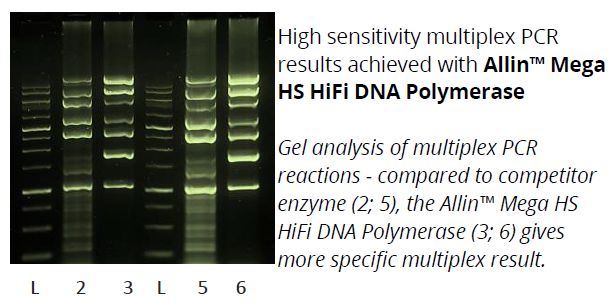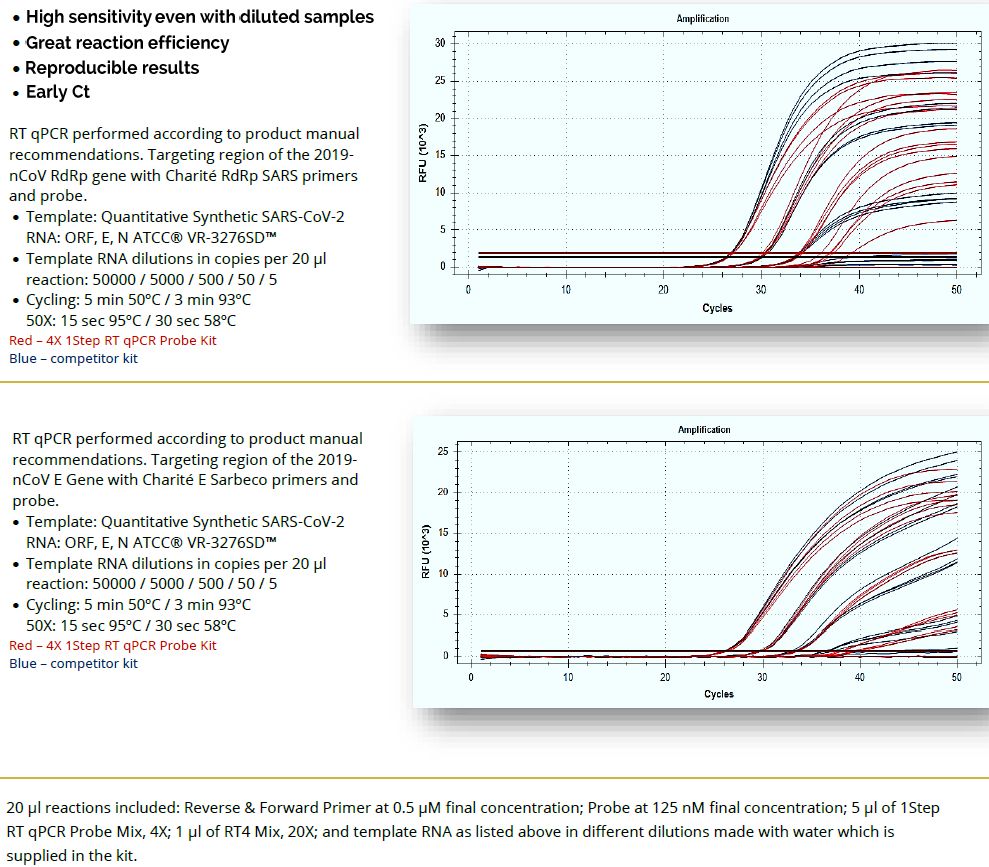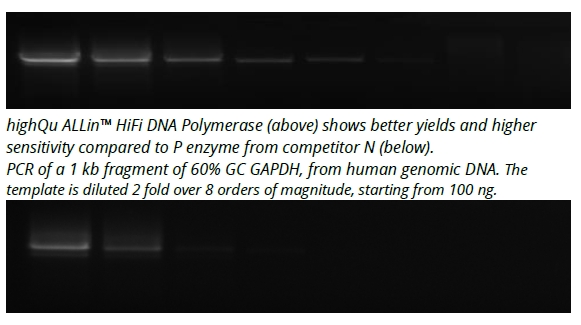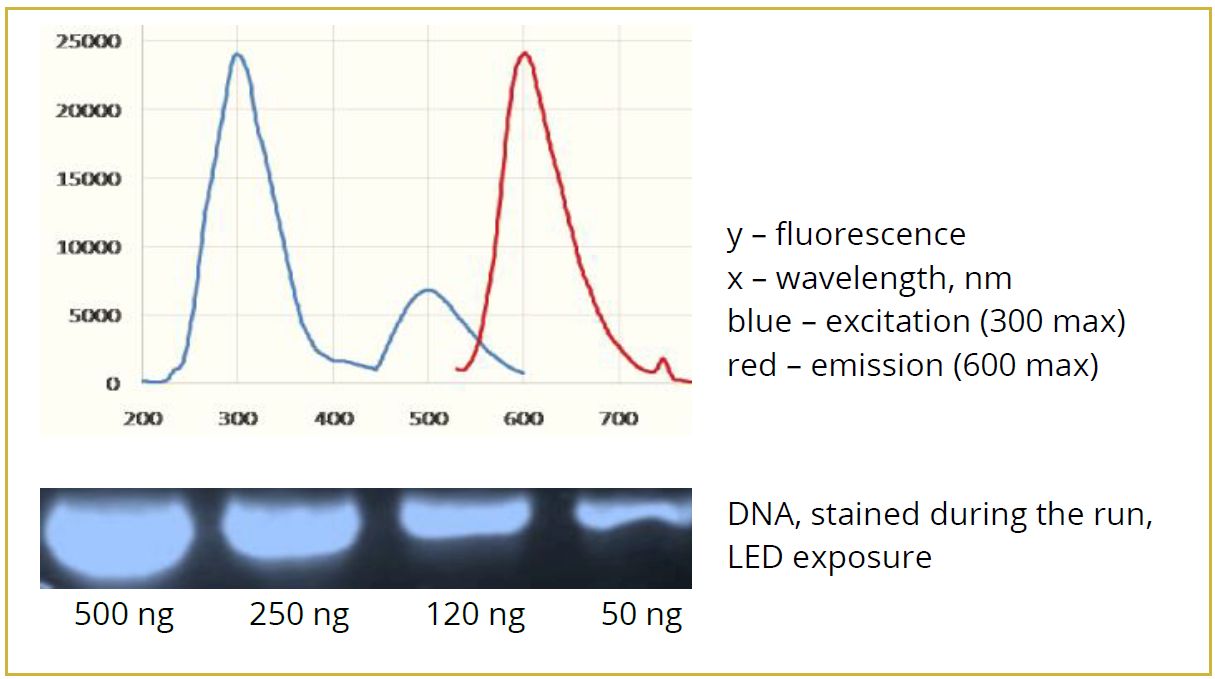ALLin™ Mega HS HiFi DNA Polymerase
Applications
- Sequencing, including NGS library preparation.
- Hot start PCR, multiplexing.
- Fast high-fidelity PCR (up to 100 x Taq).
- Long PCR up to 20 kb.
- Amplification of complex (GC/AT rich) templates.
- Blunt-end cloning and other applications.
Benefits
- Hot start enzyme for increased sensitivity and great multiplex results.
- Fast, high yield PCR with the fidelity 100x higher than Taq.
- Up to 20 kb long PCR even from complex templates.
- Increased processivity for faster amplification and higher yield.
- High thermostability for better denaturation of GC rich templates.
- Best choice for NGS library prep. and other sequencing applications.
ALLin™ Mega HS HiFi DNA Polymerase
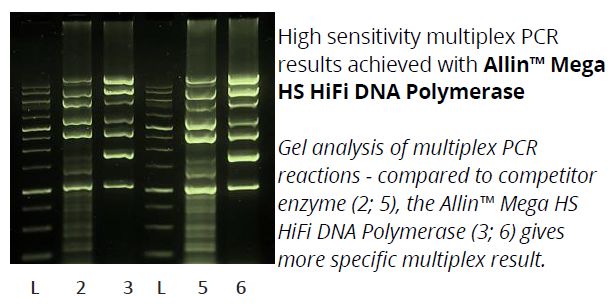
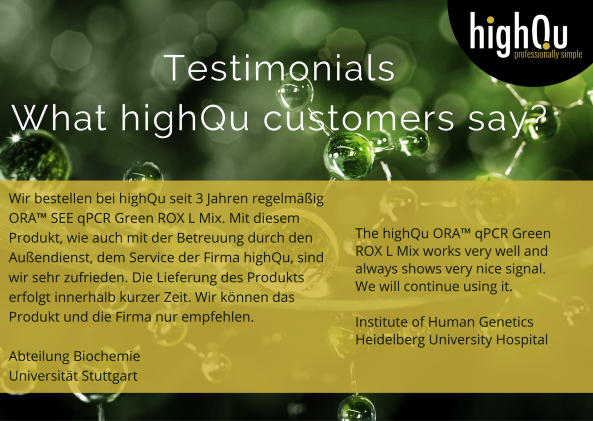






- Description highQu ALLin™ Mega HS HiFi DNA Polymerase provides much lower error rate PCR with a 100 higher fidelity compared to Taq. Com… More
- Protocols Download Protocol and Specifications - Product Insert ALLin™ Mega HS HiFi DNA Polymerase Ask for a Sample today Have technic More
- Specifications Download Protocol and Specifications - Product Insert ALLin™ Mega HS HiFi DNA Polymerase Download MSDS ALLin™ Mega HS HiFi D More
- Resources Download Protocol and Specifications - Product Insert ALLin™ Mega HS HiFi DNA Polymerase Download MSDS ALLin™ Mega HS HiFi D More
highQu ALLin™ Mega HS HiFi DNA Polymerase provides much lower error rate PCR with a 100 higher fidelity compared to Taq. Compared to Mega HiFi, this hot start enzyme version allows for even higher sensitivity and specificity of PCR as well as for a room temperature reaction setup, and is excellent choice for multiplex reactions. The ALLin™ Mega HS HiFi DNA Polymerase is engineered to be much faster and to generate higher yield of long PCR products up to 20 kb from complex GC-rich templates. Therefore the ALLin™ Mega HS HiFi DNA Polymerase is an excellent choice for longer and very complex PCR applications where the highest fidelity is demanded. It is an enzyme of choice for cloning and all kind of sequencing applications including NGS. Generated blunt-ended PCR products are suitable for ligation into blunt vectors.
- Download Protocol and Specifications - Product Insert ALLin™ Mega HS HiFi DNA Polymerase
- Ask for a Sample today
- Have technical questions? Contact us
- Download a list of Publications mentioning highQu products
- Or see how others use our products at bioz.com or google scholar
- Download Protocol and Specifications - Product Insert ALLin™ Mega HS HiFi DNA Polymerase
- Download MSDS ALLin™ Mega HS HiFi DNA Polymerase
- Need a lot-specific Certificate of Analysis? E-mail us at info@highQu.com
- Want custom formulations or bulk sizes? E-mail us at info@highQu.com, and check our OEM offers
- Have more specific questions? Contact us
- Download Protocol and Specifications - Product Insert ALLin™ Mega HS HiFi DNA Polymerase
- Download MSDS ALLin™ Mega HS HiFi DNA Polymerase
- Download highQu Catalogue of Premium Research Tools
- Download a list of Publications mentioning highQu products
- Or see how others use our products at bioz.com or google scholar
- Download Product Pricelist (DE 2021)
- Download all highQu Product Inserts and MSDS sheets
- Have questions? Contact us
Related Products

